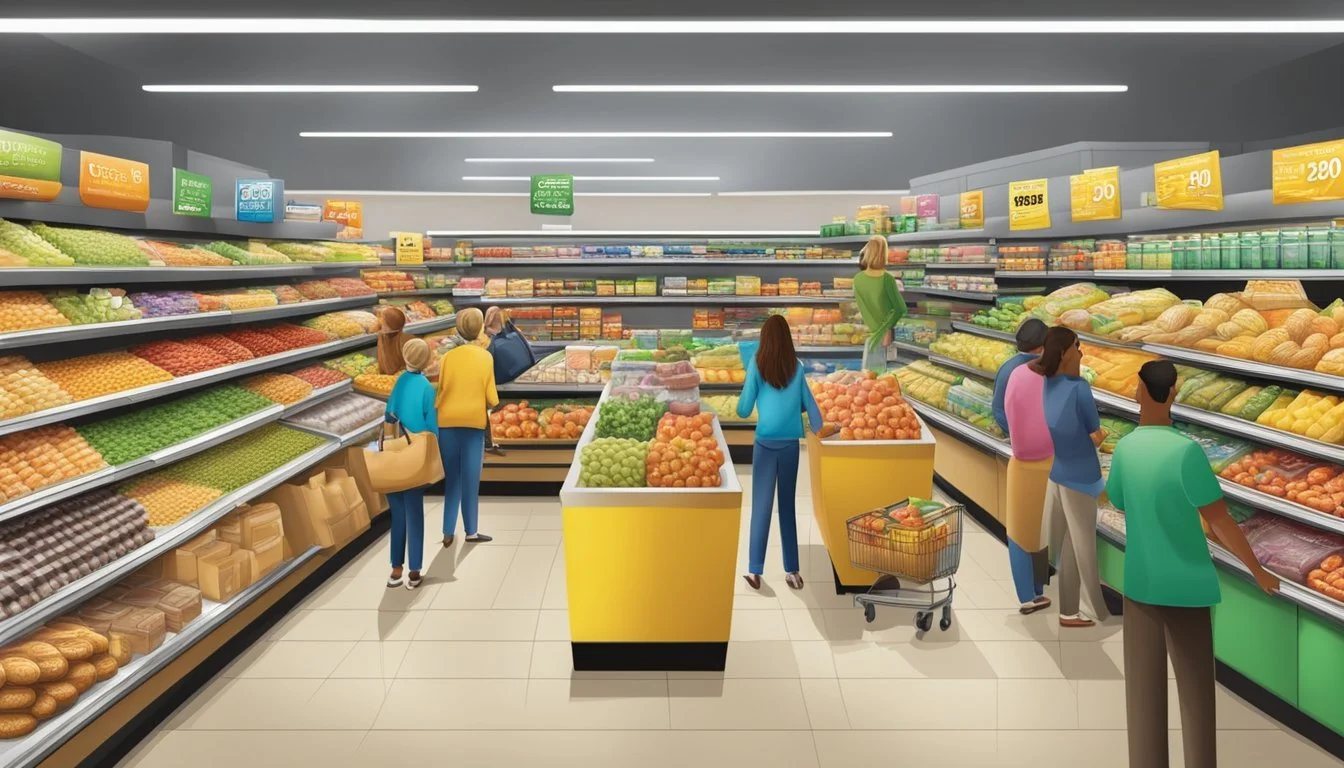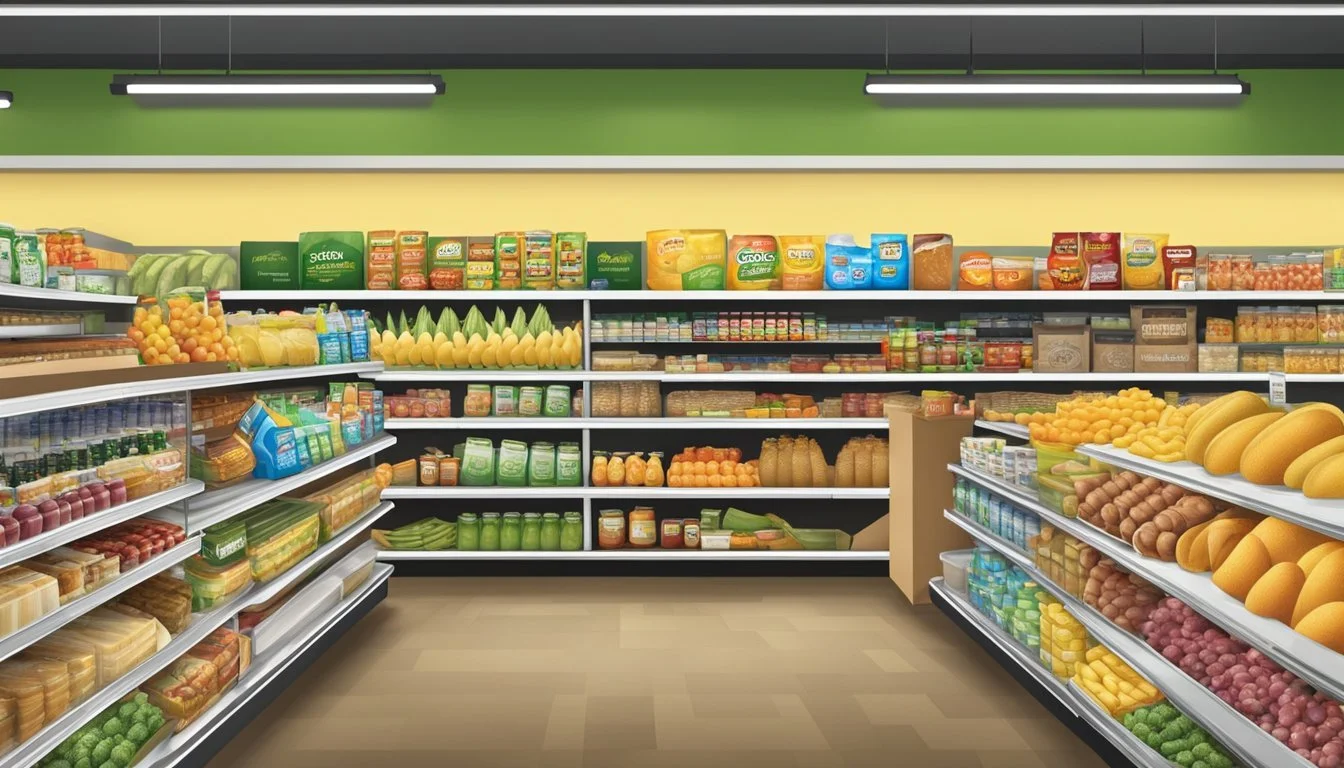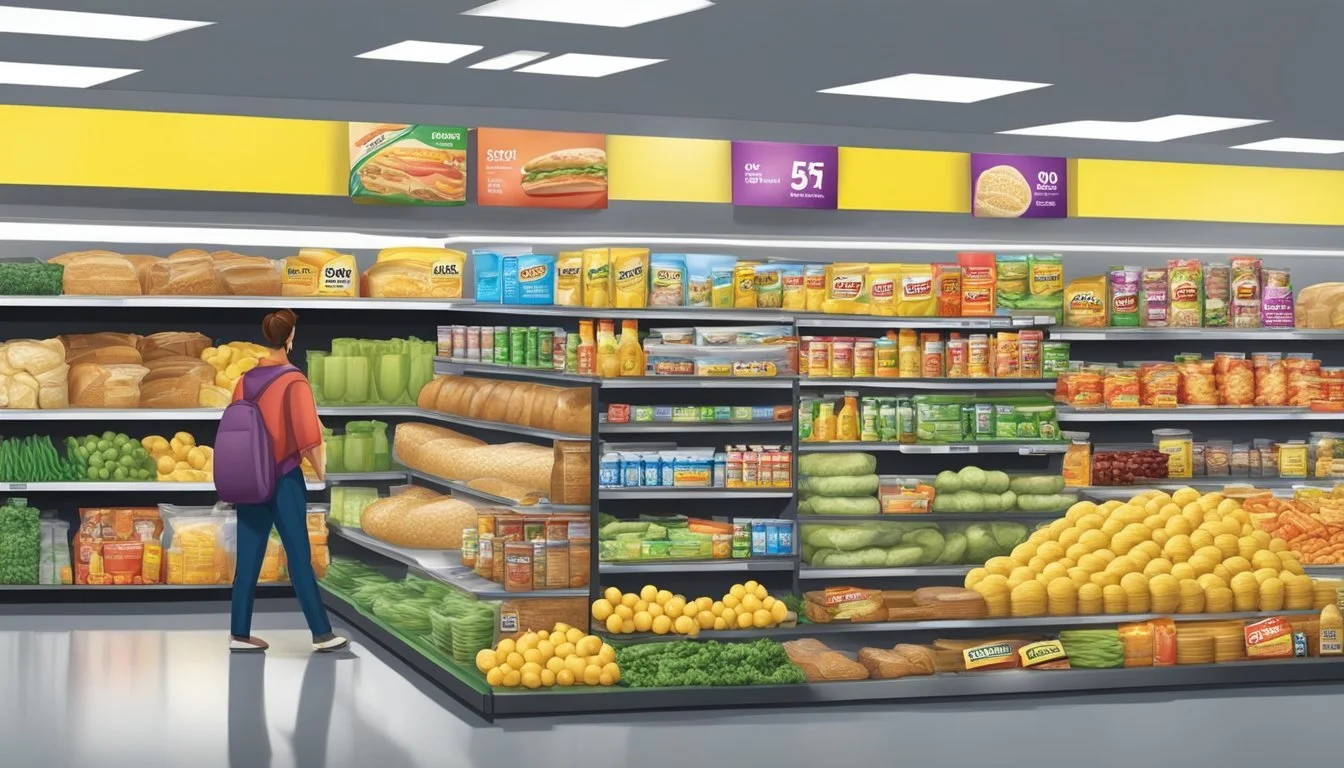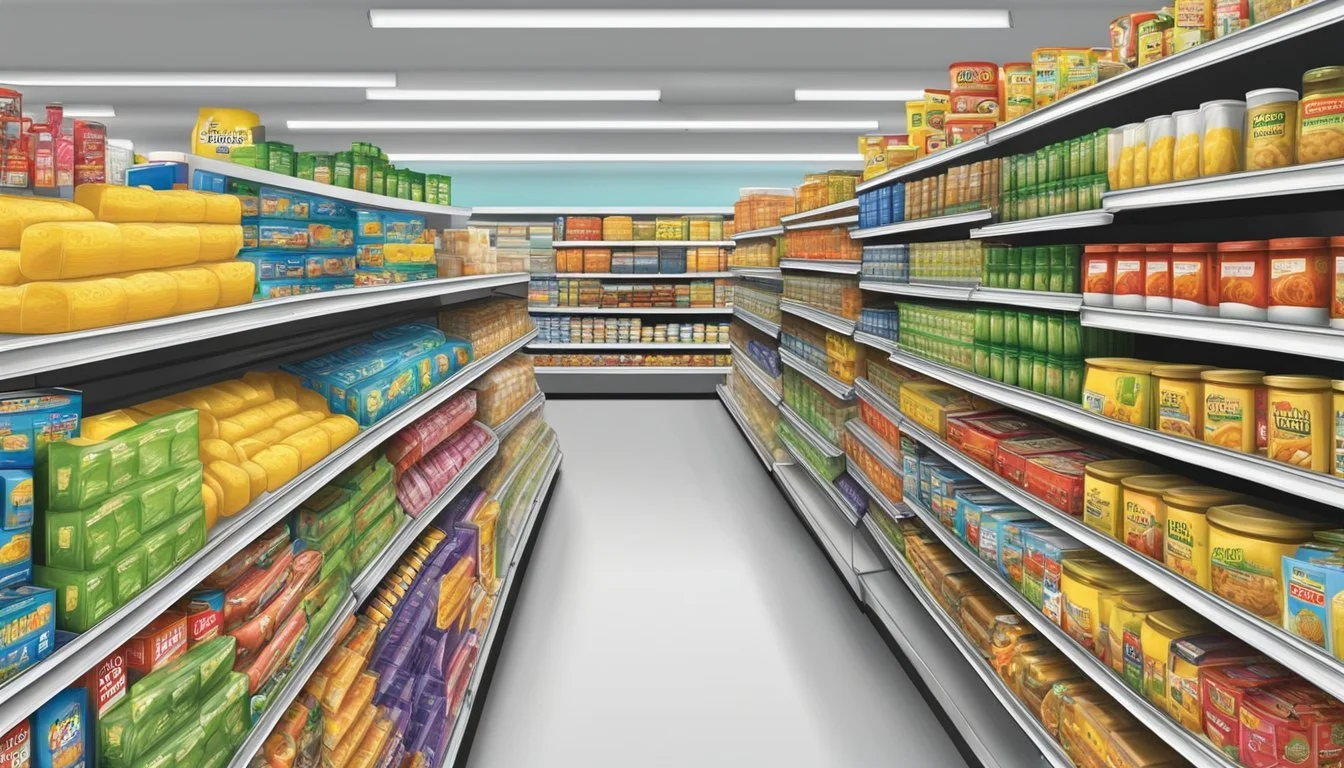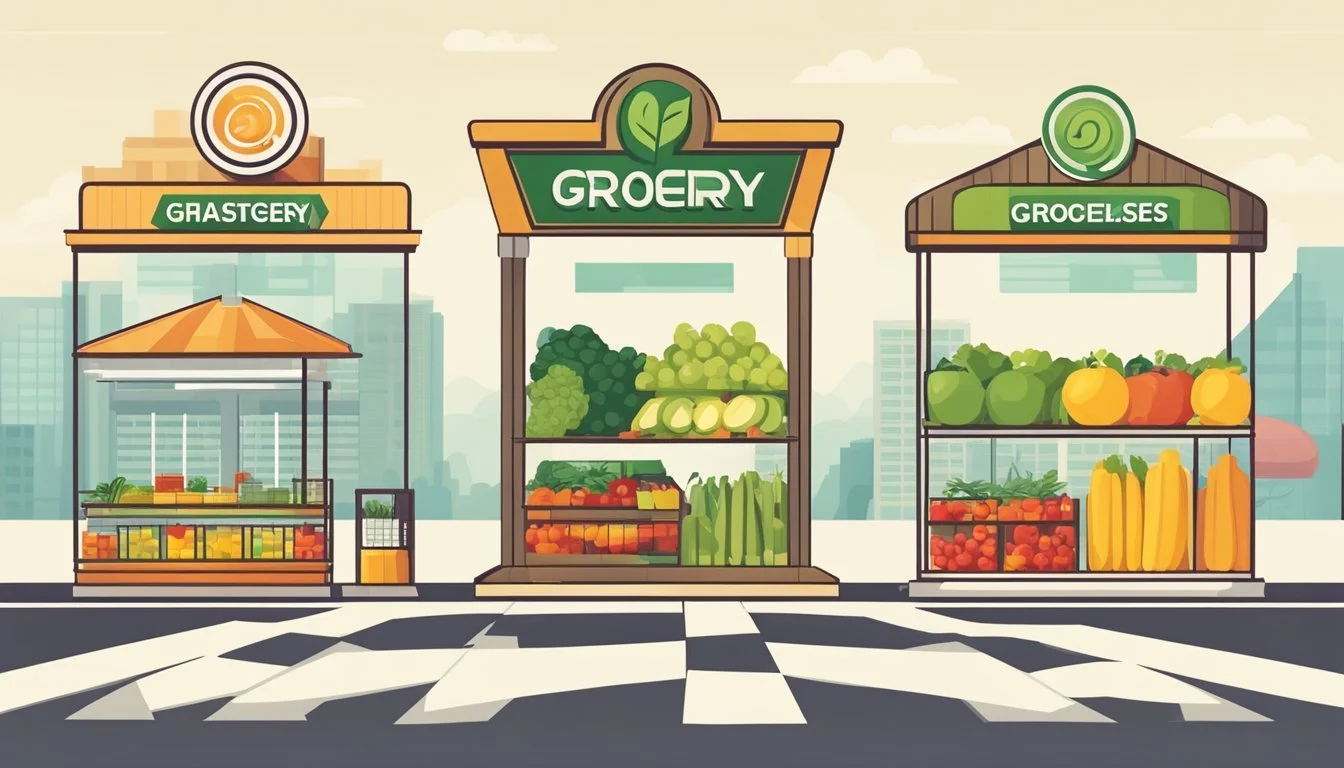Dollar General vs Giant Food
Comparing Prices, Selection, and Convenience
In the competitive landscape of grocery retail, Dollar General and Giant Food stand out as distinct options for shoppers. These two chains cater to different consumer needs and preferences, offering varied product selections and shopping experiences.
Dollar General focuses on providing everyday essentials at low prices, with a widespread presence in rural and suburban areas. The chain's smaller format stores emphasize convenience and affordability. While Dollar General offers some grocery items, its selection is more limited compared to traditional supermarkets.
Giant Food, on the other hand, operates as a full-service grocery chain with larger stores and a wider range of products. This retailer provides an extensive selection of fresh produce, meats, bakery items, and brand-name groceries. Giant Food typically targets urban and suburban markets, aiming to be a one-stop shop for customers seeking a comprehensive grocery experience.
Company Overviews
Dollar General and Giant Food represent different segments of the grocery retail market. Each company has carved out its own niche, serving distinct customer bases with unique store formats and product offerings.
Dollar General's Market Presence
Dollar General operates over 18,000 stores across 47 states, primarily targeting rural and suburban areas. The company's focus lies in providing everyday essentials at affordable prices. Dollar General's store formats include traditional dollar stores, larger DG Markets, and the newer Popshelf concept.
DG Markets offer an expanded grocery selection, including fresh produce and meat. These locations aim to serve as primary shopping destinations in areas with limited access to full-service supermarkets. Popshelf stores target middle-income suburban shoppers with a rotating inventory of seasonal and home decor items.
Dollar General's strategy centers on convenience and value, with most items priced under $10. The company's rapid expansion has made it a significant player in the discount retail sector, particularly in rural communities.
Giant Food's Store Format
Giant Food operates as a traditional supermarket chain with approximately 165 stores across the Mid-Atlantic region. The company focuses on providing a full-service grocery experience with a wide range of products and departments.
Giant Food stores typically feature large footprints of 50,000 to 70,000 square feet. These locations include extensive produce sections, full-service deli and bakery departments, and pharmacy services. Many stores also offer prepared foods and in-store dining options.
The chain emphasizes fresh, high-quality products and a diverse selection of national and private-label brands. Giant Food has invested in digital initiatives, including online ordering and delivery services, to compete with other major supermarket chains and e-commerce retailers.
Product Range and Selection
Dollar General and Giant Food offer distinct product ranges to cater to different shopper needs. Both stores aim to provide a variety of options, but their focus and depth of selection vary across categories.
Fresh Produce and Perishables
Dollar General's DG Market stores have expanded their fresh produce offerings. These locations stock a selection of fruits and vegetables, though the variety may be limited compared to traditional grocery stores. Giant Food, as a full-service supermarket, provides a more extensive array of fresh produce. Their selection typically includes a wider range of seasonal fruits and vegetables.
In the meat department, Dollar General offers basic cuts and frozen options. Giant Food features a full-service meat counter with various cuts, grades, and specialty items. Giant Food's dairy section is more comprehensive, with a broader selection of milk, cheese, yogurt, and other dairy products.
Packaged Foods and Pantry Items
Dollar General excels in providing affordable, shelf-stable packaged foods. Their aisles are stocked with popular brands of cereal, pasta, snacks, and canned goods. The selection focuses on everyday staples and quick meal solutions.
Giant Food offers a more diverse range of packaged foods. Their shelves include both mainstream and specialty brands, catering to various dietary preferences and needs. The store typically stocks a larger variety of international foods, gourmet items, and organic options.
Non-Food Items
Dollar General carries a significant selection of non-food items, including:
Cleaning supplies
Personal care products
Basic home decor
Seasonal items
Greeting cards
Giant Food's non-food selection is more limited but still substantial. They offer:
Health and beauty products
Household cleaning supplies
Baby care items
Pet supplies
A small selection of kitchenware
Both stores provide basic household essentials, but Dollar General often has a broader range of general merchandise at lower price points.
Pricing and Value
Dollar General and Giant Food employ different pricing strategies to attract budget-conscious shoppers. Both stores offer competitive prices on everyday essentials, but their approaches to discounts and promotions vary significantly.
Everyday Prices and Discounts
Dollar General focuses on maintaining consistently low prices across its product range. Many items are priced at $1 or less, making it attractive for shoppers on tight budgets. The store's private label brands often provide even greater savings compared to national brands.
Giant Food's pricing tends to be slightly higher on average, but the store compensates with frequent sales and discounts. Their loyalty program offers personalized deals based on shopping habits. Giant Food also price-matches competitors' advertised deals, helping customers maximize savings.
A price comparison of common items:
Item Dollar General Giant Food Milk (1 gallon) $2.95 $3.29 Bread (1 loaf) $1.85 $2.19 Eggs (1 dozen) $2.25 $2.49
Coupons and Special Promotions
Dollar General offers digital coupons through its app, allowing customers to save on specific products. The store runs weekly specials and clearance events, but these tend to be less extensive than traditional supermarkets.
Giant Food provides a more robust coupon program. Shoppers can stack manufacturer coupons with store coupons and digital deals for maximum savings. The store's weekly circular features numerous sale items across departments.
Giant Food's "Buy Theirs, Get Ours Free" promotion encourages customers to try store-brand alternatives. This unique offer provides substantial savings while introducing shoppers to Giant's private label products.
Store Experience and Convenience
Dollar General and Giant Food offer distinct shopping experiences tailored to different customer needs. Their store formats, layouts, and locations significantly impact accessibility and convenience for shoppers.
Shopping Ambiance
Dollar General stores typically have a no-frills atmosphere with simple shelving and basic decor. Aisles are narrow but organized, allowing for quick navigation. The stores focus on efficiency rather than aesthetics.
Giant Food, in contrast, provides a more traditional grocery store environment. Wider aisles, detailed signage, and specialized departments create a more immersive shopping experience. Fresh produce sections, bakeries, and deli counters contribute to a full-service feel.
Dollar General's compact format facilitates grab-and-go shopping. Giant Food's larger stores accommodate leisurely browsing and meal planning.
Location Accessibility
Dollar General excels in rural and urban accessibility. Their smaller stores fit into areas where larger grocers can't operate profitably. This strategy helps address food deserts by bringing basic groceries to underserved communities.
Giant Food stores are generally found in suburban and urban areas. They require larger plots of land and tend to be located in more densely populated regions. While fewer in number, Giant Food stores often serve as anchor tenants in shopping centers.
Dollar General's widespread presence means shorter travel times for many customers. Giant Food offers fewer locations but provides a more comprehensive shopping destination.
Operational Efficiency
Dollar General and Giant Food employ different strategies to maximize their operational efficiency. These approaches impact their supply chains and inventory management practices.
Supply Chain Strategies
Dollar General utilizes a hub-and-spoke distribution model. This system allows for efficient product movement from distribution centers to stores. The company operates over 15 distribution centers across the United States.
Giant Food relies on a more traditional supply chain. They work with regional suppliers and have fewer distribution centers. This approach helps maintain freshness for perishable goods.
Dollar General focuses on rapid restocking with frequent deliveries to stores. They use rolltainers, which are wheeled containers, to quickly move products from trucks to shelves.
Giant Food emphasizes longer-term planning and bulk deliveries. This strategy reduces transportation costs but requires more storage space in stores.
Stock Management
Dollar General employs a lean inventory model. They stock a limited number of SKUs, focusing on fast-moving items. This approach reduces carrying costs and minimizes waste.
The company is implementing AI-based technology for perishable food ordering. This system aims to optimize stock levels and reduce shrinkage in their expanding produce sections.
Giant Food maintains a wider product selection. They use advanced forecasting tools to predict demand and adjust stock levels. This helps balance product availability with waste reduction.
Both retailers track same-store sales closely. Dollar General's smaller format allows for quicker inventory turns. Giant Food's larger stores require more complex stock management systems.
Brand and Market Analysis
Dollar General and Giant Food target different consumer segments with distinct positioning strategies. Their brand identities and market approaches reflect varying priorities in product offerings, pricing, and shopping experiences.
Target Demographics
Dollar General appeals primarily to budget-conscious shoppers in rural and suburban areas. The chain focuses on low-income households, offering essential items at affordable prices. Its small-format stores cater to quick trips and convenience.
Giant Food attracts middle-income suburban families. The supermarket chain provides a wider range of products, including fresh produce and premium brands. Giant Food's larger stores accommodate weekly shopping trips and offer more variety.
Competitive Positioning
Dollar General competes directly with other discount retailers like Dollar Tree and Family Dollar. It emphasizes everyday low prices and convenience, often locating stores in areas underserved by larger chains.
Giant Food positions itself against traditional supermarkets and mass merchandisers like Walmart. The chain focuses on quality, selection, and customer service. Giant Food's loyalty programs and personalized promotions aim to build customer relationships.
Both retailers face growing competition from online giants like Amazon and discount grocers such as Aldi. Dollar General has expanded its fresh food offerings to compete with larger grocery chains, while Giant Food has invested in e-commerce capabilities to meet changing consumer preferences.
Community and Social Impact
Dollar General and Giant Food have distinct impacts on the communities they serve. Their approaches differ in addressing food insecurity and contributing to local economies.
Addressing Food Insecurity
Dollar General often enters areas with limited food options, potentially filling gaps in food deserts. The chain offers a range of packaged and frozen foods at low prices. However, its selection of fresh produce is typically limited.
Giant Food, as a traditional grocer, generally provides a wider variety of fresh fruits, vegetables, and perishable items. This can significantly improve access to nutritious foods in communities.
Research indicates that for every three dollar stores opening, one grocery store closes. This trend may reduce overall fresh food availability in some areas.
Economic Contributions
Dollar General tends to create jobs quickly due to its rapid expansion. The company often hires locally, providing employment opportunities in rural and underserved areas.
Giant Food typically offers more full-time positions with benefits. These jobs can provide greater economic stability for employees and their families.
Local businesses may face increased competition when Dollar General enters a market. Giant Food, while also a chain, often integrates more with local suppliers and farmers.
Both stores contribute to local tax bases, but their long-term economic impacts on communities can differ significantly.
Consumer insights
Customer feedback and shopping patterns provide valuable insights into how Dollar General and Giant Food are perceived. These metrics reveal key differences in customer experiences and loyalty between the two retailers.
Customer Satisfaction Metrics
Dollar General scores well for convenience and affordability. Shoppers appreciate the wide selection of low-priced household essentials. The company's rapid expansion has made stores easily accessible in many communities.
Giant Food receives high marks for product quality, especially in fresh departments. Customers value the chain's wider selection of national brands and organic options. Giant's larger store formats allow for a more comfortable shopping experience.
Both retailers face criticism for long checkout lines during peak hours. Dollar General struggles with keeping shelves stocked, while Giant Food sometimes disappoints on price competitiveness.
Loyalty and Repeat Business
Dollar General cultivates loyalty through its everyday low pricing strategy. The company's DG Digital Coupons program has gained traction among value-conscious shoppers. Frequent limited-time deals drive repeat visits.
Giant Food's loyalty program offers personalized savings and gas rewards. This multi-faceted approach encourages customers to consolidate their shopping trips. The chain's pharmacy services also contribute to customer retention.
In Maryland, Giant Food maintains a strong presence, particularly in suburban areas like Fort Washington. Dollar General has made inroads in rural and urban locations but faces stiffer competition in this market.
Comparison studies show Giant Food customers tend to have higher basket sizes but shop less frequently. Dollar General patrons often make multiple small trips per week for fill-in items.
Conclusion
Dollar General and Giant Food each offer unique shopping experiences catering to different consumer needs. Dollar General excels in providing affordable everyday essentials and household items. Its widespread locations make it convenient for quick trips and budget-conscious shoppers.
Giant Food, on the other hand, offers a more comprehensive grocery selection. It provides fresh produce, a wider range of brands, and specialty departments like bakeries and delis. The store emphasizes quality and customer service.
Price-sensitive customers may find better deals at Dollar General for certain items. However, Giant Food often compensates with frequent sales, promotions, and a loyalty program.
The choice between these stores ultimately depends on individual preferences and shopping habits. Those prioritizing rock-bottom prices and convenience might lean towards Dollar General. Shoppers seeking a full-service grocery experience with more variety may prefer Giant Food.
Both retailers have their strengths and serve valuable roles in their respective markets. Savvy consumers can benefit from utilizing both stores strategically, taking advantage of each one's unique offerings and pricing structures.

